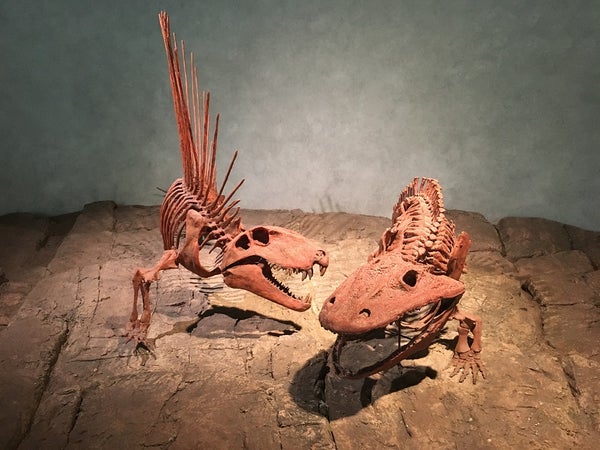This article was published in Scientific American’s former blog network and reflects the views of the author, not necessarily those of Scientific American
The Permian never quite gets the attention it deserves. Long after our fishy ancestors made a home on land, but before the great reptilian takeover of the Mesozoic, this time offers a look at what could seem like an alternative evolutionary timeline - a world in which our protomammal cousins and relatives held the world in their claws. Yet not just who populated this world, but how it came to be, is still mysterious, and a recent study on the rise and fall of ancient forests adds a little more to the picture.
The critical time period here is the span between the Carboniferous - during which vertebrates made permanent homes on land, away from the water - and the earliest parts of the Permian. Up until now, it was thought that changes in diversity had to do with “Carboniferous rainforest collapse.” The standing hypothesis was that the contraction of lush Carboniferous forests, and the move from swampier conditions to more arid climates in the Permian, isolated various vertebrate species. This, the argument goes, led to the evolution of many more new forms in their own patches of habitat. The increasing diversity paleontologists saw through this time was because changes in forest structure created islands of habitat where evolutionary possibilities changed.
But paleontologist Emma Dunne and colleagues propose that something different was going on. The way Carboniferous and early Permian fossil beds have been sampled may have skewed the picture.
On supporting science journalism
If you're enjoying this article, consider supporting our award-winning journalism by subscribing. By purchasing a subscription you are helping to ensure the future of impactful stories about the discoveries and ideas shaping our world today.
When paleontologists think about major patterns in the fossil record, they have to think about sampling. The history of life on Earth is unevenly recorded, and excavations are often directed by access and research questions. In other words, the fossil record as we know it is influenced by what actually became preserved as well as what we continue to dig out of it. Some strata or formations are well-known and have been excavated for decades. Others we still know very little about. More formations of the early Permian have been sampled and collected from than much of the Carboniferous, for example, which might make the Permian look more diverse than the time that came before. And if we’re to understand the to-ing and fro-ing of evolution over time, this source of potential bias has to be accounted for.
Drawing from information archived in the Paleobiology Database, Dunne and coauthors looked at pinpoints on the map for 476 tetrapod species that lived from the Carboniferous through the early Permian. From there, they considered the raw diversity - that is, with sampling bias not considered - and then corrected for the way sampling might have influenced the bigger picture. What Dunne and colleagues found ran opposite to what other researchers proposed.
First, Dunne and coauthors write, the Carboniferous rainforests didn’t truly collapse. These lush, swampy habitats either moved or were replaced. It was a matter of turnover rather than a last stand of forest patches separated by inhospitable land. More than that, the tetrapod fossil record during this transition doesn’t show increased diversity springing up in isolated pockets. To the contrary, species diversity dropped across the Carboniferous-Permian boundary and stayed relatively low in the early Permian.
And there was something else. Dunne and colleagues note that their results indicate a higher degree of connection between different vertebrate communities during the changes in vegetation. Rather than tetrapods being stranded in the habitats they always knew, the researchers suggest, the changes may have caused existing species to disperse and expand to new areas. This is what appears to have happened with finbacked protomammals called sphenacodontids, for example, which include our old friend Dimetrodon. The new story of this change isn’t about collapse, but could be better summed up as “Don’t fence me in.”
